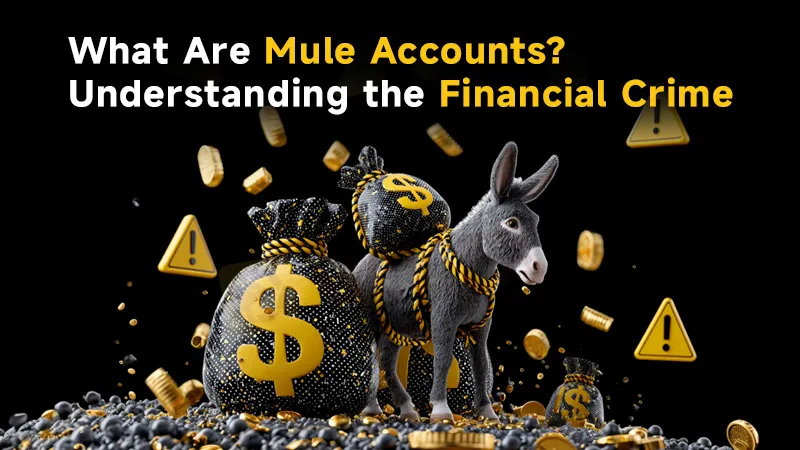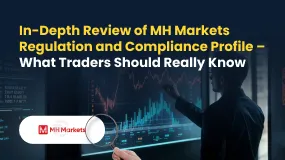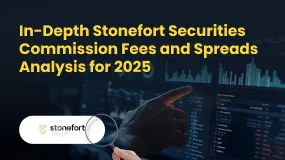简体中文
繁體中文
English
Pусский
日本語
ภาษาไทย
Tiếng Việt
Bahasa Indonesia
Español
हिन्दी
Filippiiniläinen
Français
Deutsch
Português
Türkçe
한국어
العربية
What Are Mule Accounts? Understanding the Financial Crime
Abstract:A Mule account is one of the tools used in the financial society. While the term may sound harmless, mule accounts are a central component in money laundering, investment scams, and cyber fraud, enabling criminals to move illicit funds through the global financial system without detection.

A Mule account is one of the tools used in the financial society. While the term may sound harmless, mule accounts are a central component in money laundering, investment scams, and cyber fraud, enabling criminals to move illicit funds through the global financial system without detection.
What Is a Mule Account?
A mule account refers to a bank or trading account used by criminals to transfer, receive, or hide illegally obtained money. The account holder may be a willing participant or an unwitting victim who believes they are performing a legitimate task, such as helping process payments for a job.
Essentially, a mule account acts as a buffer layer between the source of criminal funds and their ultimate destination, obscuring the money trail from regulators and law enforcement agencies.
How Mule Accounts Work
Money mules are recruited through various deceptive means, including:
- Fake job advertisements: Promising easy income for “processing transactions” or “acting as a local agent.”
- Romance scams: Victims are persuaded to receive and send funds on behalf of a supposed romantic partner.
- Social media and messaging apps: Fraudsters use platforms like Telegram, WhatsApp, or Facebook to recruit people with promises of quick commissions.
Once a victim agrees, criminals transfer illicit funds into the mules bank or trading account. The mule is then instructed to forward the money — often converting it into cryptocurrency or sending it overseas — keeping a small “commission.” In doing so, they unknowingly launder stolen money.
Types of Mule Accounts
There are typically three categories of mule accounts:
- Unwitting Mules: Individuals unaware they are laundering money, often victims of employment or romance scams.
- Witting Mules: People who suspect illegal activity but choose to ignore the warning signs.
- Complicit Mules: Fully aware individuals who willingly participate in criminal schemes for financial gain.
Why Mule Accounts Are Dangerous
Mule accounts dont just facilitate fraud, they also undermine financial stability and erode trust in digital banking and trading systems. They make it difficult for authorities to trace criminal proceeds and are often linked to:
- Investment scams
- Business email compromise (BEC)
- Identity theft
- Human trafficking and drug money laundering
Moreover, those who operate mule accounts face severe legal penalties. Even if someone claims ignorance, authorities in many countries hold account holders accountable for allowing their accounts to be used for money laundering.
How to Recognize and Avoid Mule Account Schemes
To protect yourself, its important to be aware of common red flags:
- Job offers requiring you to use your personal bank account for payments
- Online “friends” asking you to transfer money for them
- Promises of easy money with minimal effort
- Requests to share banking details with strangers
What Financial Institutions Are Doing
Banks and brokers worldwide are strengthening their anti-money laundering (AML) frameworks to detect mule accounts. Many now use:
- AI-based transaction monitoring
- Enhanced customer due diligence (CDD)
- Behavioral analytics to flag suspicious activity
Regulators such as the Financial Conduct Authority (FCA), Financial Crimes Enforcement Network (FinCEN), and AUSTRAC are also cracking down on mule networks by collaborating across borders to trace and freeze illicit funds.
Conclusion
Mule accounts might seem like a minor link in the global fraud chain, but they are crucial enablers of financial crime. By understanding how they work — and how to spot the warning signs — individuals and institutions can help prevent billions in losses tied to cybercrime and fraud.

Disclaimer:
The views in this article only represent the author's personal views, and do not constitute investment advice on this platform. This platform does not guarantee the accuracy, completeness and timeliness of the information in the article, and will not be liable for any loss caused by the use of or reliance on the information in the article.
Read more

KKR Exposed: Traders Allege Fund Scams, Withdrawal Denials & Regulatory Concerns
Do you witness a negative trading account balance on the KKR broker login? Does the broker prevent you from withdrawing your funds after making profits? Do you need to pay an extra margin for withdrawals? These trading issues have become common for traders at KKR. In this KKR broker review article, we have elaborated on the complaints. Take a look!

IG Launches 5% Cashback Offer for New UK Customers
IG cashback offer UK 2025 gives investors up to £100 back. Compare the best UK investment platforms with cashback today.

In-Depth Review of MH Markets Regulation and Compliance Profile – What Traders Should Really Know
This in-depth analysis provides a data-driven examination of the MH Markets regulation and compliance profile. Drawing primarily on verified data from the global broker inquiry app WikiFX, supplemented by public records, we will dissect the broker's multi-jurisdictional licensing, evaluate the real-world protections offered to traders, and interpret the warnings and ratings that define its standing in the competitive forex and CFD landscape.

In-Depth Stonefort Securities Commission Fees and Spreads Analysis for 2025
This comprehensive Stonefort Securities commission fees and spreads analysis aims to cut through the noise. We will dissect the broker's complete cost structure, from the spreads on its Elite account to its commission policies and the potential for hidden non-trading fees. Explore more.
WikiFX Broker
Latest News
Gratitude Beyond Borders: WikiFX Thank You This Thanksgiving
MH Markets Commission Fees and Spreads Analysis: A Data-Driven Breakdown for Traders
Alpha FX Allegations: Traders Claim Account Blocks, Withdrawal Denials and Security Breaches
How to Become a Profitable Forex Trader in Pakistan in 2025
CFTC Polymarket Approval Signals U.S. Relaunch 2025
Zipphy Exposed: No Valid Regulation, Risk Warning
KEY TO MARKETS Review: Are Traders Facing Withdrawal Delays, Deposit Issues & Trade Manipulation?
FCA Consumer Warning – FCA Warning List 2025
Australia’s Fraud-Intel Network Exposes $60M in Scams
Malaysia’s SkyLine Guide Top 25 Brokers Are Out!
Currency Calculator



